Share
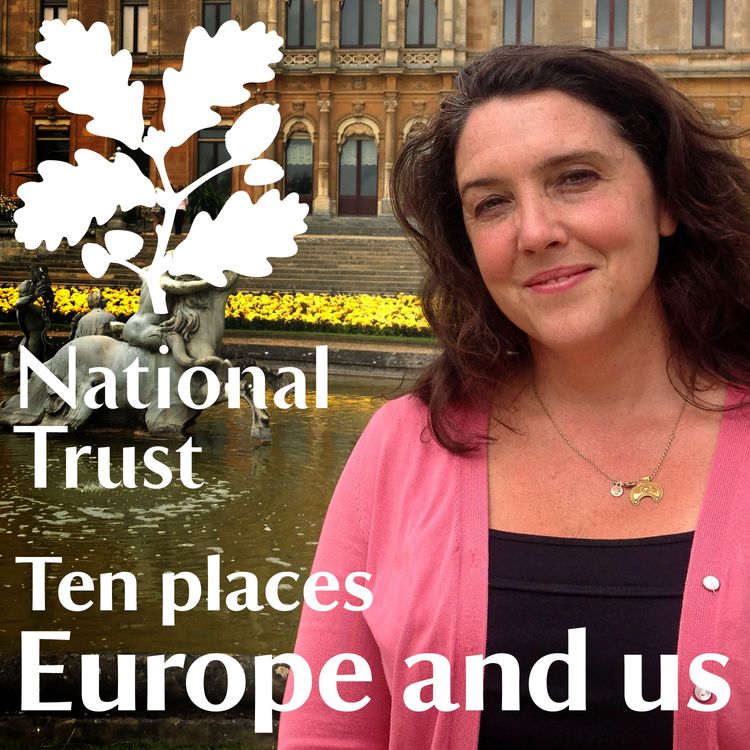
Bettany Hughes’s Ten Places, Europe and Us
Fountains Abbey
•
Now a romantic ruin, Fountains Abbey in North Yorkshire was a thriving industrial hub for the Cistercian order of monks in the 12th Century. Here Bettany meets archaeologist Mark Newman to bring the Abbey to life once more and to explore the impact of the Cistercians, the first truly pan-European movement, on Britain’s economy.
Bettany meets Head of Landscape, Michael Ridsdale, to discuss how the ruined abbey became a folly to the Studley Royal Estate in the 18th Century, and how he and his team of gardeners are presenting the site for modern visitors. Finally, Bettany returns to the east end of the Abbey to learn from Mark how cutting-edge technology has revealed an exciting new find, which sheds fresh light on the monks’ beliefs.
For more information about Fountains Abbey, including opening times and dates, go to: www.nationaltrust.org.uk/fountains-abbey-and-studley-royal-water-garden
More episodes
View all episodes
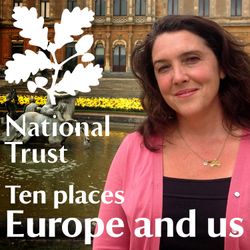
2 Willow Rd
23:08|Bettany takes a tour of 2 Willow Road in Hampstead with National Trust volunteer John Escolme. The house was built by Hungarian architect Ernö Goldfinger both as family home and manifesto of his Modernist ideals. Goldfinger is famous for designing Trellick Tower in West London to solve the post-war housing crisis. Despite its nadir in the 1970s when Trellick became known as ‘the tower of terror’, it’s now something of a cultural icon, although Erno never lived to see its rehabilitation. Bettany explores the way this remarkable tweed-wearing émigré brought the Bauhaus to Britain with Goldfinger’s biographer Nigel Warburton, and how at 2 Willow Rd, he paid homage to our Georgian architectural tradition in what is now considered to be a Modernist masterpiece. For more information about 2 Willow Rd, including opening times and dates, go to: www.nationaltrust.org.uk/2-willow-road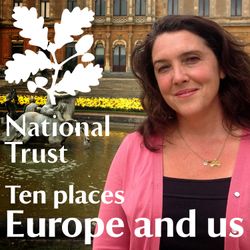
Orford Ness
21:08|Bettany explores Orford Ness, a ten-mile long shingle spit off the coast of Suffolk, with site manager Grant Lohoar and wildlife expert Stewart Warrington. Access to Orford Ness was denied to the public during much of the 20th century, due to the top-secret nature of the work being undertaken here for the military. When the National Trust opened the site to the public in 1995, the management concerns of this area changed considerably and it is now protected as a fragile natural environment and a site of historical interest. Bettany examines the globally rare vegetated shingle spit, and visits the radar research station and the nuclear bomb testing labs, to observe how this mysterious wind-swept and remote island is slowly being reclaimed by nature. For more information about Orford Ness, including opening times and dates, go to: www.nationaltrust.org.uk/orford-ness-national-nature-reserve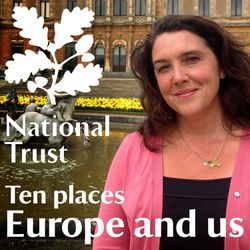
Upton House
19:39|Upton House in Warwickshire was one of four houses owned by Walter Samuel, the 2nd Lord Bearsted, who was one of the richest men in Britain before the Second World War. When he bought this estate in 1927 it satisfied all those favourite pre-war pursuits for the well-heeled British, but there is more to this house, and its former owner, than meets the eye. House manager Michelle Leake shows Bettany around Lord Bearsted’s notable art collection and uncovers more about the quiet philanthropist who lived by his own motto and put ‘deeds before words’. This is revealed in his incredible bid to rescue Jewish children from Nazi Germany, known today as the Kindertransport. Bettany has a moving meeting with Lynne Parsons, the daughter of one of the Kindertransport children whom Lord Bearsted helped to rescue. For more information about Upton House, including opening times and dates, go to: www.nationaltrust.org.uk/upton-house-and-gardens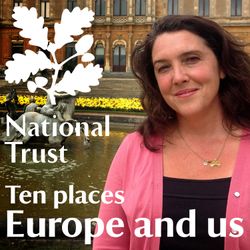
Sandham Memorial Chapel
21:59|The Sandham Memorial Chapel in Hampshire is Stanley’s Spencer’s monument to the forgotten dead of the First World War. The murals draw on Spencer’s experiences serving first as a medical orderly in Britain and then on active service in the Balkans. Bettany meets Operations Manager Alison Paton to take a closer look at the paintings and she lends Bettany a ladder to investigate the stories on the highest parts of the walls. Spencer expert Amanda Bradley discusses his inspiration from Giotto’s Arena Chapel in Padua. Finally Bettany has a cup of tea with Robert Eggar, a retired solider who volunteers at the chapel and who believes that Spencer has discovered the only thing that is beautiful about the battlefields - the comradeship of men - which is why so many of our war heroes visit the chapel today. For more information about Sandham Memorial Chapel, including opening times and dates, go to: www.nationaltrust.org.uk/sandham-memorial-chapel
Waddesdon
23:11|Bettany visits Waddesdon Manor in Buckinghamshire, an extraordinary French chateau built as a fairy-tale castle by Baron Ferdinand de Rothschild in the heart of the English countryside. Here Bettany meets Pippa Shirley, Head of Collections and Gardens, to discuss the contradictions at the heart of the house, which showcases the best of 18th century French decorative art. Ferdinand devised the house in part as a stage set to court power and for a ‘wow’ factor, and this very much paid off when Queen Victoria asked to visit. The Queen became obsessed with the new electric light switches, which she kept turning on and off. Later, Margaret Thatcher chose to host President Mitterand here during the 1990 summit: an event about which Lord Rothschild spills the beans in an illuminating chat with Bettany. For more information about Waddesdon, including opening times and dates, go to: www.nationaltrust.org.uk/waddesdon-manor
Kingston Lacy
24:26|At Kingston Lacy in Dorset, Bettany meets House Steward Bernie King to learn about William John Bankes who, during the 19th Century, turned Kingston Lacy into the treasure trove you’ll find today. This extraordinary house is a testament to Bankes’ obsession for exploring and collecting in Europe and beyond. Bettany examines his fabulous European art collection with paintings expert Christine Sitwell and is given exclusive access to William John’s sitting room to learn more about what made him tick. The tragedy of Bankes’ life is that he never saw out his days at Kingston Lacy after he was forced into exile in Italy for being gay, at a time when homosexuality was illegal. Although Bettany learns it is very likely he visited the house incognito to comment on the door hinges! For more information about Kingston Lacy, including opening times and dates, go to: www.nationaltrust.org.uk/kingston-lacy.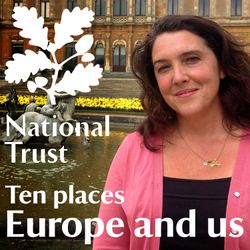
Sutton Hoo
20:28|Bettany visits Sutton Hoo in Suffolk to piece together a profile of the mystery king who was buried in the world famous Anglo-Saxon ship burial. A strong contender was King Raedwald who was important enough to warrant such a VIP burial. Bettany handles master crafted replicas of the ‘Mound 1’ treasures (the originals are now in the British Museum) with researcher Laura Howarth and learns how his grave goods show how well connected the king was to Europe and the wider world. Archeologist Faye Minter spills the beans on new finds from Rendlesham, the likely royal residence and state centre of the Anglo-Saxon kingdom of East Anglia. Situated near the Sutton Hoo necropolis, Rendlesham gives fresh clues to the king’s lifestyle and his worldview. For more information about Sutton Hoo, including opening times and dates, go to: www.nationaltrust.org.uk/sutton-hoo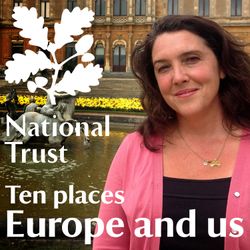
Chedworth Roman Villa
21:36|Bettany takes a tour of the Chedworth Roman Villa in Gloucestershire with archeologist Martin Papworth who reveals what the latest excavations tell us about the people who lived here. Chedworth's heyday was during the 'Golden Age' of Roman Britain in the 4th Century, when the villa was surrounded by other luxury houses. In the museum, Nancy Grace shows Bettany bits of Roman DIY, including painted plaster with a distinctly cubist pattern on it. She learns how the villa clearly belonged to wealthy Brits made good, who kitted out their bathroom with highly sought-after 'little onion' marble, imported from Imperial quarries on the Greek island of Euboea. For more information about Chedworth Roman Villa, including opening times and dates, go to: www.nationaltrust.org.uk/chedworth-roman-villa